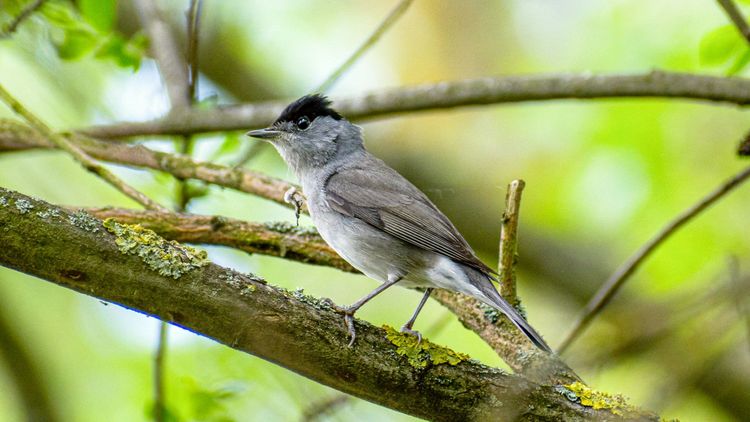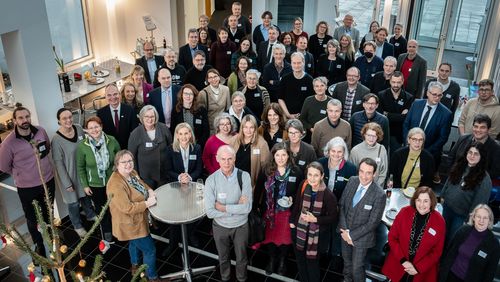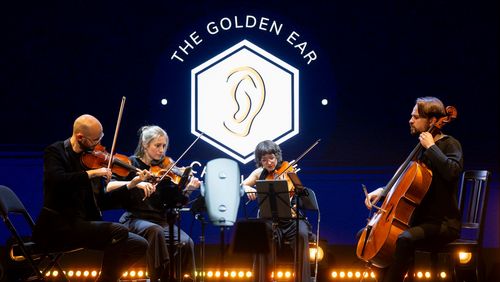Many songbirds use the earth's magnetic field as a guide during their migrations, but radiowaves interfere with this ability. A new study has found an upper bound for the frequency that disrupts the magnetic compass.
While radio waves emitted by radio and television broadcasting and CB radio can disrupt the magnetic compass of migratory birds, those used in mobile communication networks do not because the frequencies are too high to affect their sense of orientation. This was the key finding of a new study published in the scientific journal Proceedings of the National Academy of Sciences (PNAS) by a team of researchers led by Professor Dr Henrik Mouritsen of the University of Oldenburg and Professor Dr Peter Hore of the University of Oxford (UK).
This finding also bolsters the researchers' theory that the magnetic compass sense in these birds is based on a quantum-mechanical effect (known as radical pair mechanism) located in their eyes. For this study, the team combined behavioural experiments with complex quantum-mechanical calculations on a supercomputer.
Mouritsen, Hore and colleagues had already demonstrated in 2014 that electrosmog (human-made electromagnetic noise) in the AM radio waveband, such as that generated by household electrical appliances, impairs migratory birds' ability to use the Earth's magnetic field for orientation (known as magnetoreception).
They posit that this weak electrosmog, which is harmless for humans, affects the complex quantum-physical processes in certain cells in the retinas of migratory birds which enable them to navigate with the help of the Earth's relatively weak magnetic field. But whether electrosmog also affects free-flying birds such as long-distance migratory birds, whose numbers have been declining for some time for unknown reasons, remains unclear.
A light-sensitive protein called cryptochrome
In the current study, the researchers took a closer look at the connection between the quantum-mechanical mechanism which they suspect forms the basis for the birds' magnetic sense and the disruption of this mechanism by radio waves. Their aim was to find further evidence of how the magnetic compass sense functions and thus provide a basis for further investigations into disruptive effects on the birds' migratory behaviour. The focus of their interest was the cut-off frequency above which the navigation of migratory birds remains unaffected, since determining this value allows conclusions to be drawn about the properties of the actual magnetic sensor in the birds. Their theory is that this sensor is a light-sensitive protein called cryptochrome 4 which possesses the necessary magnetic properties.
The scientists' initial theoretical prediction was that the cut-off frequency would lie somewhere between 120 and 220 megahertz in the Very High Frequency (VHF) range, so the team conducted behavioural experiments with Eurasian blackcaps using different frequency bands within this range. In a study published in 2022 the researchers had already demonstrated that radio waves of a frequency between 75 and 85 megahertz interfere with the magnetic compass sense of these small songbirds. Blackcaps are long and medium-distance migrants that can cover long distances during their annual migration. These experiments showed that their magnetic compass stopped working when they were exposed to these radio frequencies, but worked properly without exposure.
High frequency radio waves did not affect the compass sense
In the current study, a team led by Mouritsen and Hore as well as the two lead authors – biologist Bo Leberecht and chemist Siu Ying Wong, both from the University of Oldenburg — conducted experiments with frequencies between 140 and 150 megahertz and between 235 and 245 megahertz. They found that the radio waves in both these frequency bands did not affect the birds' magnetic compass sense – which confirmed the scientists' theoretical predictions.
The researchers also performed model calculations in which they simulated the quantum-mechanical processes inside the cryptochrome protein. On the basis of these calculations they were able to narrow down the cut-off frequency even further, to 116 megahertz. According to the simulations, radio waves above this frequency would only have a weak effect on the birds' magnetic orientation. This prediction was borne out by the results of the experiments. "Our experiments, together with detailed theoretical predictions, provide strong evidence that the compass magnetoreceptor in migratory birds is based on a flavin-containing radical pair and not a completely different sort of receptor, for example one based on magnetic nanoparticles," Mouritsen explains.
Mobile communications networks do not impair the birds' magnetic sense
Gaining a better understanding of magnetoreception is important for improving the protection of migratory birds. It can provide insights on key questions, such as what kind of electromagnetic radiation drives birds off course and should therefore be avoided in areas like nature reserves where migratory birds stop to rest. Mouritsen underlines that whereas the radio waves used in radio and television broadcasting or CB radio play a decisive role in disrupting magnetoreception, mobile communications networks do not impair the birds' magnetic sense: "The frequencies used here are all above the relevant threshold."
This research is a result of the Collaborative Research Centre (CRC) Magnetoreception and navigation in vertebrates: from biophysics to brain and behaviour, of which Mouritsen is the spokesperson. The CRC's international team includes researchers from a wide range of disciplines including neurobiology, quantum physics, biochemistry, computer modelling and behavioural biology. In addition to the University of Oldenburg, the Institute of Avian Research "Vogelwarte Helgoland" (IfV) in Wilhelmshaven, the Freie Universität Berlin, the Ruhr University Bochum and the Weizmann Institute of Science in Rehovot (Israel) are also participating in the CRC. Three researchers from the University of Oxford (UK) are affiliated with the CRC as Mercator Fellows.






